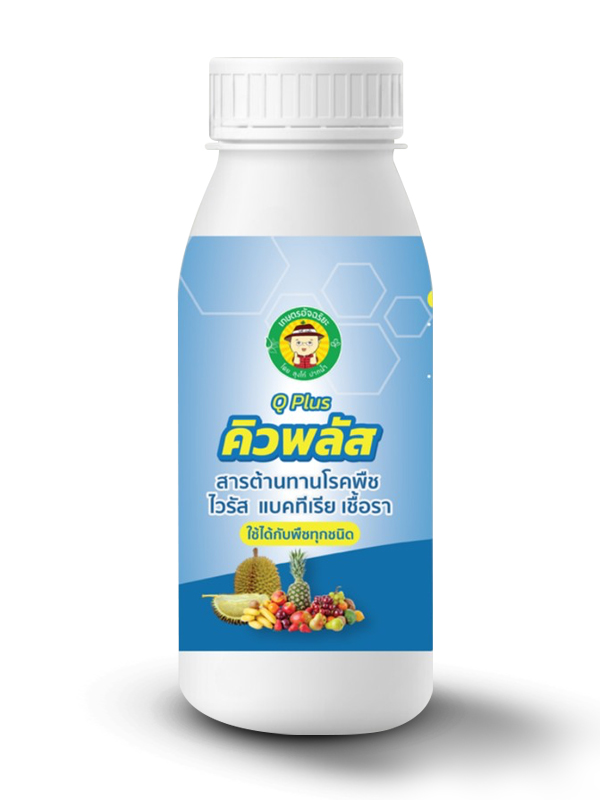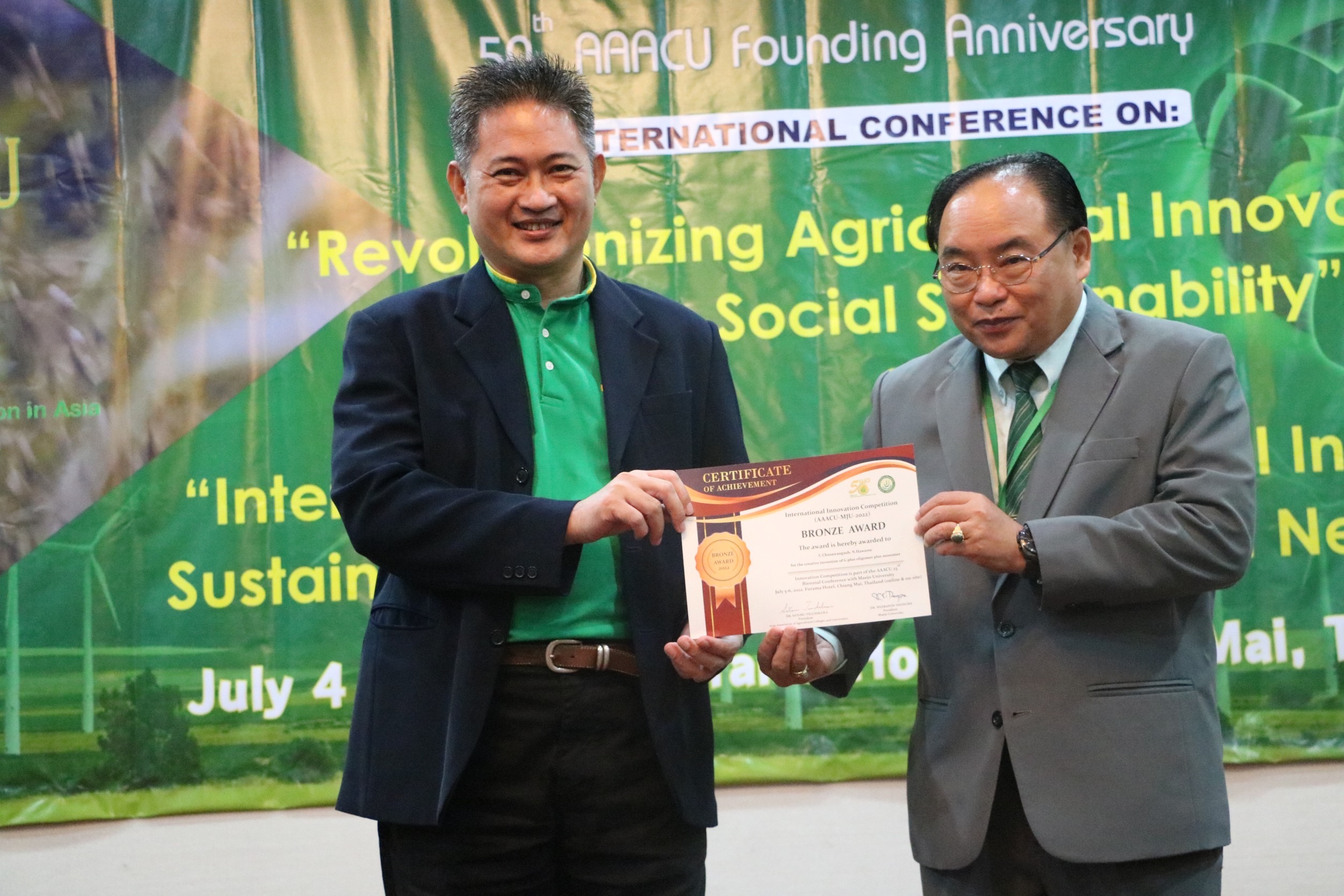
Q Plus
Anti Plant Pathogens
Q Plus is a Chito oligomer and monomer biological that is efficient in eradicating plant diseases caused by viruses, bacteria, and fungi. It destroys pathogen cell walls and causes cell death within 4-6 hours after spraying. It adheres to the plant’s surface, continuously disinfecting and preventing re-infection.
Chitosan oligomers, also known as Chito oligomers, are degradation of chitosan with a degree of polymerization (DP) less than 20 (e.g., DP6 = Hexamer, DP1 = Monomer) and an average molecular weight (MW) less than 3.9 kDa (normal range 0.2-3.0 kDa). It also has better solubility and remarkable properties such as biodegradability, biocompatibility, adsorptive capabilities, and non-toxicity like chitin and chitosan. (Liang, S. et al., 2018: Schmitz, C. et al., 2019)
Much research has been conducted to demonstrate the antimicrobial effects of chitosan and chitosan oligomers on bacteria and fungi. It is thought that the mechanism of action is due to the positive charge that binds to the negative charge on the pathogen’s cell wall, allowing germ cells to be destroyed. It was also shown that low molecular weight chitosan oligomer can penetrate pathogen cell walls and inhibit ATP synthesis and mitochondrial function. (Ing, L.Y. et al. 2012 : Ke, C.L. et al. 2021)
Click for detail Mechanism of antipathogen activities
Chirkov (2002) and Davydova et al. (2011) examined the antiviral action of chitosan in plants in detail. They discovered that chitosan could inhibit viral infections in a wide range of plants from various families. Chitosan has been proven to influence plant immune responsiveness to viral infection, in addition to systematically preventing the spread of viruses in plants. (Chirkov, S.N., 2002: Davydova, V.N. et al., 2011) According to some investigations, chitosan has no direct antiviral effect; rather, it enhances the plant’s immunological response and improves defense systems in general. (Iriti & Varoni, 2015; Iriti & Varoni, 2016) There have been studies that indicate that the application of chitosan and its derivatives is beneficial in treating viral infections in plants such as tobacco leaf spot virus (Tobacco Mosaic Virus) and potato virus (Potato Virus X). (Jaber, N. et al. 2021)
The key ingredient of Q Plus
- Polyglucosamine oligomers, which have been confirmed in both domestic and international research, can eliminate pathogens in plants, including viruses, bacteria, and fungi, by using a mechanism in which positive ions bind to the cells of pathogens that are negatively charged, allowing cells to be destroyed. Furthermore, Polyglucosamine oligomers boost the plant’s immune system, making it resistant to disease.
- Polymers are surfactants that aid in the drying and adhesion of Polyglucosamine oligomers to plant surfaces over time. It may continually eliminate pathogens and prevent infection recurrence.
Indication
Q Plus is effective against plant diseases caused by viruses, bacteria, and fungi such as the Cassava leaf spot virus, Papaya ring virus, Greening, Canker, Shrub bush, Green wilt, Phytophthora, Fusarium, and pink, black, and rust fungi.
Usage rate
- Diseases prevention: Mixed Q Plus 10 cc. with 20 liters of water. Spray thoroughly every 5-7 days.
- Diseases outbreak: Mixed Q Plus 20 cc. with 20 liters of water. Spray thoroughly every 5 days for 2 times.
Benefits of Q Plus
- Destroy pathogens cell wall.
- Eliminate all type of pathogens.
- Adhere well on the plant surface.
- Continuously eliminate pathogens.
- Prevent infection recurrence.
References
- Chirkov, S.N. 2002. The antiviral activity of chitosan. Applied Biochemistry and Microbiology, 38, 1–8. https://doi. org/10.1023/A:1013206517442.
- Davydova, V.N., Nagorskaya, V.P., Gorbach, V.I., Kalitnik, A.A., Reunov, A.V., Solov’eva, T.F. et al. 2011. Chitosan antiviral activity: dependence on structure and depolymerization method. Applied Biochemistry and Microbiology, 47(1), 103–108.
- Ing, L.Y., Zin, N.M., Sarwar, A., Katas, H. 2012. Antifungal activity of chitosan nanoparticles and correlation with their physical properties. Int J Biomater., 632698. doi: 10.1155/2012/632698
- Jaber, N., Al-Remawi, M., Al-Akayleh, F., Al-Muhtaseb, N., Al-Adham, I.S.I. and Collier, P.J. 2022. A review of the antiviral activity of chitosan, including patented applications and its potential use against COVID-19. J Appl Microbiol, 132, 41-58.
- Ke, C.-L., Deng, F.-S., Chuang, C.-Y. & Lin, C.-H. 2021. Antimicrobial actions and applications of chitosan. Polymers, 13, 904. Available https://doi.org/10.3390/polym13060904
- Liang, S., Sun, Y. & Dai, X. 2018. A review of the preparation, analysis and biological functions of chitooligosaccharide. International Journal of Molecular Sciences, 19(2197), 1-19.
- Schmitz, C., González Auza, L., Koberidze, D., Rasche, S., Fischer, R. & Bortesi L. 2019. Conversion of chitin to defined chitosan oligomers: current status and future prospects. Marine Drugs, 17(8):452. Available https://doi.org/10.3390/md17080452








